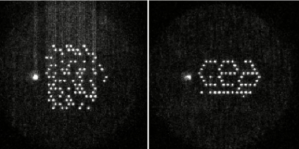We propose a quantum algorithm for “extremal learning,” which is the process of finding the input to a hidden function that extremizes the function output, without having direct access to the hidden function, given only partial input–output (training) data. The algorithm, called quantum extremal learning (QEL), consists of a parametric quantum circuit that is variationally trained to model data input–output relationships. A trainable quantum feature map encodes the input data, and after training it is analytically differentiated in order to find the input that extremizes the model. This enables the combination of quantum machine learning modeling with quantum optimization, on a single integrated circuit/quantum computer. We have tested our algorithm on a range of classical datasets based on discrete and/or continuous input variables, both of which are compatible with the algorithm. We test QEL on synthetic problems based on discrete inputs (Weighted Max-Cut problems, chemical molecule optimization), continuous inputs (synthetic datasets in 1D, ordinary differential equations), and both (oracular optimization). We find that QEL can successfully find the extremal value of such problems, even when the training dataset is sparse or a small fraction of the input space. We additionally show how QEL can be used for general cases of higher dimensionality, and complex differential equations while providing flexibility in the choice of modeling and optimization ansatze. We envision that the general framework and simple construction could allow QEL to target a variety of applications in different fields, opening up areas for further research.
Quantum Extremal Learning

